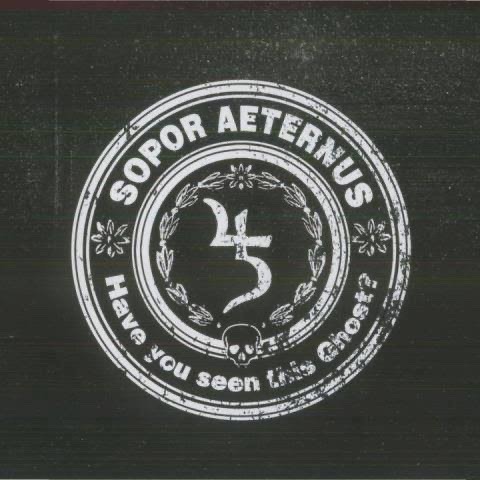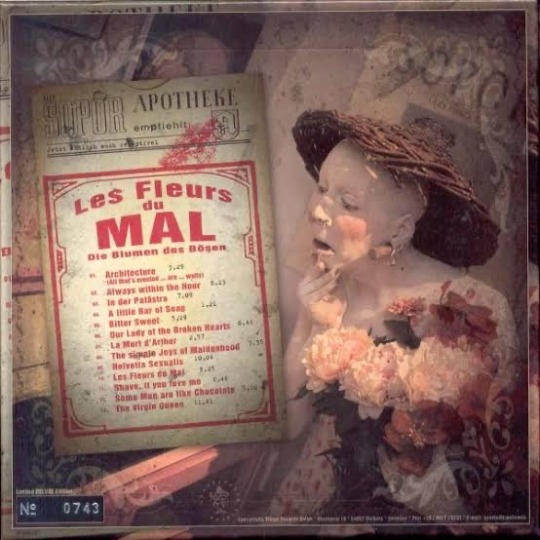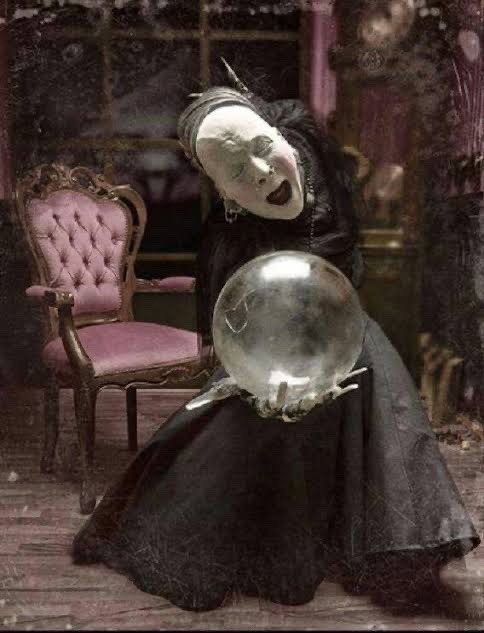Don't wanna be here? Send us removal request.
Text
1
Bradlaugh, A. A., Fedele, G., Munro, A. L., Hansen, C. N., Hares, J. M., Patel, S., Kyriacou, C. P., Jones, A. R., Rosato, E., & Baines, R. A. (2023). Essential elements of radical pair magnetosensitivity in Drosophila. Nature, 615(7950), 111–116. https://doi.org/10.1038/s41586-023-05735-z
Previous research has found that cryptochromes, a hidden pigment in the retinas of birds, could serve as a magnetic field sensor. Electrons separated by quantum entanglement exhibit both singlet and triplet states within these pigments, and the balance between these two states is determined by the magnetic field. Although scientists still do not understand why quantum properties emerge in warm living organisms, these biological mechanisms indeed enable global navigation. As the migration season approaches, the gene expression of cryptochrome proteins, which contain the hidden pigment, increases, triggering an unstoppable migratory urge in birds. This phenomenon might be referred to as the so-called "sixth sense."
In a recent study published in the journal Nature, it is suggested that magnetic field sensitivity might be more widespread than previously thought and that all animals might possess the ability to sense magnetic fields. This advanced and specific capability is not exclusive to migratory animals. Previously, it was believed that FAD (flavin adenine dinucleotide) merely acted as an accessory to cryptochromes. However, this study discovered that even at low levels of cryptochromes, FAD is capable of independently sensing magnetic fields. Research conducted on fruit flies showed that high levels of FAD can spontaneously respond to magnetic fields under light stimulation. This indicates that magnetic field sensitivity is not solely driven by cryptochromes. The reason why everyone is said to have a sixth sense is due to the presence of FAD in almost all cells, albeit at varying levels. The inability to perceive this phenomenon might be attributed to the lack of assistance from cryptochromes, preventing the generation of detectable signals.
As mentioned earlier, when individuals need to make decisions within a short timeframe, the sixth sense could heighten their awareness of their surroundings, leading to more accurate judgments. Similarly, this sixth sense might serve as a wellspring of creativity and inspiration, aiding individuals in artistic endeavors, problem-solving, and innovative thinking. This heightened sensory ability could spark unconventional ideas, assisting individuals in discovering unique solutions or creating awe-inspiring works of art. Although the scientific community still debates the legitimacy of the sixth sense, it can occasionally yield positive effects in specific contexts.
2.
Xu, J., Jarocha, L. E., Zollitsch, T., Konowalczyk, M., Henbest, K. B., Richert, S., Golesworthy, M. J., Schmidt, J., Déjean, V., Sowood, D. J. C., Bassetto, M., Luo, J., Walton, J. R., Fleming, J., Wei, Y., Pitcher, T. L., Moise, G., Herrmann, M., Yin, H., & Wu, H. (2021). Magnetic sensitivity of cryptochrome 4 from a migratory songbird. Nature, 594(7864), 535–540. https://doi.org/10.1038/s41586-021-03618-9
Birds can see the magnetic field. Why can some bird species traverse mountains and oceans, migrating thousands of kilometers to reach their destination? Why do they face countless challenges yet manage to stay on course without getting lost, especially during nighttime migrations? They navigate by observing stars, the moon, landmarks, and certain distinctive scents, which they make effective use of. What's most remarkable is that they possess a magnetic sensor in their retinas. A recent study published in the journal Nature indicates that the most likely candidate for this magnetic sensor molecule is cryptochrome protein. Researchers exposed cryptochrome protein to blue light, transforming it into a magnetically sensitive molecule. Simultaneously, they applied a certain strength of magnetic field, resulting in two competing chemical reactions. The strength of the magnetic field influences the proportion of these two chemical reactions. While scientists aren't yet certain about the specific outcome of these chemical reactions in the birds' eyes, they believe that one of the magnetosensitive reactions triggers a change in the protein's shape, potentially leading to a different shape of the magnetosensitive protein in females. This altered shape may then interact with other proteins, initiating relevant information transmission, enabling birds to perceive the magnetic field.
If humans could see the magnetic field, it could facilitate the observation and comprehension of underground minerals, rocks, and ancient artifacts, providing deeper insights. It could enhance our understanding and perception of Earth's magnetic field changes, enabling more accurate monitoring of environmental shifts and potential geological activities. Additionally, the ability to see the magnetic field might lead to new scientific discoveries, fostering a deeper understanding of magnetic fields and their interactions with matter. By observing the magnetic field, individuals might gain better insights into utilizing and harnessing the relationship between magnetic fields and energy generation, thereby propelling more efficient development of energy technologies.
3.
Revah, O., Gore, F., Kelley, K. W., Andersen, J., Sakai, N., Chen, X., Li, M.-Y., Birey, F., Yang, X., Saw, N. L., Baker, S. W., Amin, N. D., Kulkarni, S., Mudipalli, R., Cui, B., Nishino, S., Grant, G. A., Knowles, J. K., Shamloo, M., & Huguenard, J. R. (2022). Maturation and circuit integration of transplanted human cortical organoids. Nature, 610(7931), 319–326. https://doi.org/10.1038/s41586-022-05277-w
Scientists from Stanford University have created a human-mouse hybrid brain, which responds normally when the mouse's whiskers are touched. The research findings were published in the journal Nature on October 12th. The brain hybrid isn't a genuine human brain but rather a brain-like organ grown from stem cells. Until now, brain-like organs could only mimic the human brain. They lacked the necessary nourishment, immune support, and stimulation for growth, making it challenging for them to establish neural connections like a real brain or merge with other nervous systems. However, this study has surpassed these limitations. Researchers transplanted the brain-like structure into the somatosensory cortex of newborn rats aged 2 to 3 days. This area of the rat brain receives signals from whiskers and other sensory organs and transfers them to corresponding regions.
Initially, the introduced human brain tissue was quite small, approximately five millimeters long. However, after six months, it occupied a third of the rat brain hemisphere. This rapid development was attributed to the quick infiltration and formation of blood vessels by the brain's endothelial cells, providing nutrition and eliminating metabolic waste. Researchers also observed that the resident immune cells from the rat brain appeared within the transplanted human brain cells. Results indicated that neurons from the brain-like organ successfully established functional mechanisms in the rat brain, merging with the host's neural circuits. In essence, these human brain tissues integrated with the rat brain, becoming a part of it. Implanted human brain cells could now participate in or share some of the primary brain functions.
The study also noticed that the transplanted brain-like organ, both in structure and function, was more complex than those cultivated in vitro. While this transplantation method represents a significant advancement in medicine and provides new insights for treating brain cell function-related disorders such as autism, it has also raised ethical concerns. Critics worry about the potential harm to animals from human-animal hybrids. However, currently, human brain-like organs remain too rudimentary to develop consciousness or human-like intelligence. Additionally, the research team mentioned that their organ transplantation procedure didn't induce epilepsy or memory impairment in the rats and seemed to have minimal impact on their abilities and behavior. Despite this, skepticism remains within the scientific community, as the differences between humans and mice are substantial. The effects might be more pronounced in experiments conducted on primates. Moreover, as technology progresses, new challenges are bound to emerge. In a study published in the journal Cell on April 15th last year, human liver and brain cells were injected into monkey embryos for observation of their development, suggesting that similar experiments may occur in the future. I find this topic quite intriguing.
4.
eComMed. (2009,sep.12). Experts recommend: How to simply disinfect face masks in microwave. Retrieved sep.12, 2009, from https://ecommed.vn/experts-recommend-how-to-simply-disinfect-face-masks-in-microwave/
Medical experts suggest that both cloth masks and medical masks can be effectively disinfected through three methods: UV, ozone, or microwave.
When using UV rays for disinfection, bacteria on the surface of the mask are destroyed. However, this method may not be as effective for multi-layered masks and might not reach the innermost layers.
Disinfection with ozone is more thorough than UV, but it requires bulky equipment and is not practical for home use.
The microwave method of disinfection is recommended. By utilizing the microwave's Viba waves at an active power of 800W, viruses and bacteria that pose a danger can be destroyed. This approach is endorsed by Dr. Ngoc Hai and Associates at the Institute of Health, Occupation, and Environment, Ministry of Health, and is recommended for disease prevention.
-Regarding the question of using household microwave ovens to disinfect face masks and kill the coronavirus, the Association of Home Appliance Manufacturers (AHAM) has provided the following response:
Microwave ovens should only be used for their intended purpose, which is to thaw, cook, and reheat food and beverages as specified in the user manual that comes with each unit. AHAM does not recommend using household microwave ovens to sanitize face masks. There is no research from AHAM supporting the claim that household microwave ovens effectively sanitize face masks.
Additionally, there is a concern that microwave ovens may damage the fabric and plastic materials in face masks. Some masks also contain staples or metal for strap attachment. Putting metal in a microwave is dangerous, as it can cause sparking or arcing.
5.
Charlotte Observer. (2023, July 15). Should you disinfect yourself with a hairdryer? Charlotte Observer. https://amp.charlotteobserver.com/living/home-garden/article275998866.html
The weather forecast for Charlotte predicts temperatures in the mid-80s for the upcoming week, as stated by the National Weather Service. Interestingly, studies suggest that people with specific blood types might be more susceptible to mosquito bites. The research also indicates that mosquitoes have a preference for type O blood, while individuals with type AB blood are less likely to be bitten by mosquitoes. This information highlights a potential connection between blood types and mosquito attraction.
-When mosquitoes search for biting targets, they utilize sensory organs on their antennae to detect the odors emitted by human bodies, known as chemical signals. These odors consist of complex compounds such as metabolic products, enzymes, and hormones, largely influenced by genetic coding. As a result, variations in body odor among individuals can be attributed to genetic differences.
However, blood type does not directly influence the formation of human body odor. Although some studies suggest certain blood types may be associated with specific diseases or health traits, blood type itself is not a primary factor in mosquitoes' choice of biting targets. Mosquitoes tend to rely on perceiving the scents released by human bodies to make their selection, which explains why some people are more susceptible to mosquito bites, with these differences primarily linked to genetics.
Furthermore, environmental factors can also impact the emission of human body odor. For instance, dietary habits, lifestyle, and personal care products used can influence body odor. This implies that under certain circumstances, body odor might differ due to external environmental changes, potentially affecting mosquito preferences.
While human body odor is partly determined by genetics, research indicates that mosquitoes' preferences for specific scents may vary between different regions and populations. This could be attributed to variations in genetic makeup and living environments among people in different areas, leading to differences in how mosquitoes perceive and choose scents.
In conclusion, mosquitoes utilize their antennae to sense human body odors for selecting biting targets, and these odor variations are primarily influenced by a combination of genetic and environmental factors, unrelated to blood type.
6.
Grinter, R., Kropp, A., Venugopal, H., Senger, M., Badley, J., Cabotaje, P. R., Jia, R., Duan, Z., Huang, P., Stripp, S. T., Barlow, C. K., Belousoff, M., Shafaat, H. S., Cook, G. M., Schittenhelm, R. B., Vincent, K. A., Khalid, S., Berggren, G., & Greening, C. (2023). Structural basis for bacterial energy extraction from atmospheric hydrogen. Nature. https://doi.org/10.1038/s41586-023-05781-7
Enzyme that Converts Air into Electricity. Recently, Australian scientists have discovered an enzyme capable of converting air into electricity. The related research was published in the journal Nature on March 8th. Previous studies have informed us that many bacteria in the natural world can utilize trace amounts of hydrogen gas to replenish their energy, especially in harsh environments like volcanic vents, deep-sea regions, and Antarctic soil. However, it's only recently that we have come to understand how this occurs. The enzyme isolated from Mycobacterium smegmatis, known as HUC (hydrogen-utilizing catalyst), has proven to be highly efficient. Purified HUC can generate electricity at extremely low hydrogen concentrations and remains stable over extended periods, whether frozen or heated up to 80 degrees Celsius. HUC functions as a natural battery, capable of producing a continuous electric current from air or artificially introduced hydrogen gas.
Although this research is still in its early stages, it holds significant potential, such as creating miniature solar device alternatives. Its scalability is promising, as bacteria capable of producing HUC are quite common and can be cultivated in large quantities. A key future objective is to expand the production scale of HUC. Once we possess a sufficient supply of HUC, it could serve as a raw material for producing clean energy, a significant advancement toward a cleaner energy source.
7.
Gordon, E. M., Chauvin, R. J., Van, A. N., Rajesh, A., Nielsen, A., Newbold, D. J., Lynch, C. J., Seider, N. A., Krimmel, S. R., Scheidter, K. M., Monk, J., Miller, R. L., Metoki, A., Montez, D. F., Zheng, A., Elbau, I., Madison, T., Nishino, T., Myers, M. J., & Kaplan, S. (2023). A somato-cognitive action network alternates with effector regions in motor cortex. Nature, 1–9. https://doi.org/10.1038/s41586-023-05964-2
Psychological states can influence bodily movements, and conversely, the reverse is also true. Whether it's happiness, sadness, anger, or anxiety, for millennia, people have harbored suspicions of a mysterious connection between the soul and the body. On April 19th, a new study published in the journal Nature utilized functional magnetic resonance imaging (fMRI) technology to scan participants' brains and drew upon extensive data from the UK Biobank. Within the brain's motor cortex, three areas were identified that have no direct relation to physical movement. These regions cannot directly control our actions and are referred to as the "somatic cognitive motor network." While these areas do not exhibit direct responses during physical motion, they become active when we contemplate movement. They likely serve as an intermediary between thoughts and actions, potentially providing us with the capacity for intricate thinking and planning.
Furthermore, the researchers noted that the somatic cognitive motor network is undetectable in newborns, but it becomes discernible in infants as young as 11 months old. By the age of nine, it is nearly as developed as in adults, suggesting a similar pattern of activation.
8.
Khait, I., Lewin-Epstein, O., Sharon, R., Saban, K., Goldstein, R., Anikster, Y., Zeron, Y., Agassy, C., Nizan, S., Sharabi, G., Perelman, R., Boonman, A., Sade, N., Yovel, Y., & Hadany, L. (2023). Sounds emitted by plants under stress are airborne and informative. Cell, 186(7), 1328-1336.e10. https://doi.org/10.1016/j.cell.2023.03.009
Previous research has detected that plants produce bubble vibrations under the stress of drought, but such vibrations were thought to be confined internally. However, a new study published in the journal Cell on March 30th reveals that plants can emit sounds that can propagate through the air when under pressure. The emitted sounds are highly informative, but they are ultrasonic, with frequencies beyond the range of human hearing. Some processing is required to make the sounds audible to us. Researchers placed microphones near plants and found that plants under greater stress produce sounds more frequently. They can emit sounds approximately 35 times per hour. Plants that are undamaged and adequately watered, on the other hand, remain quiet with no sound emitted for an hour. The phenomenon is not limited to tomatoes and tobacco; other plants such as millet, wheat, grapes, and cacti also emit sounds under pressure. However, the exact mechanism of how plants produce these sounds is still uncertain. Based on a combination of previous studies, these sounds may result from the bursting of internal bubbles within plants.
While humans cannot directly hear plants' communication, bats, mice, and many insects can perceive the signals emitted by plants, and plants can respond to sounds produced by animals. A study from 2019 confirmed that evening primroses produce sweeter nectar after hearing the sound of bees, thus increasing their chances of pollination. In seemingly quiet gardens, plants are engaging in secret communication with their surroundings through sound.
Researchers have now been able to identify the sounds using machine learning algorithms to determine which plant they come from and infer whether the plant is experiencing water shortage or damage. The accuracy of this identification has reached 70%.
0 notes
Text
At the core of eternal sleep - Anna

This band originated when Anna met Holger at a gothic club in Germany. They couldn't afford instruments, so their creations relied solely on their imaginative minds. Despite this, they produced quite a lot of works and released a demo album in 1992.
Later, Holger left the band, and the label Apocalyptic Visions released the band's first studio album. Their works included a lot of brass and woodwind instruments, particularly flutes, with strong religious connotations, along with various guitars and synthesizers. The content often dealt with themes of suicide, sorrow, despair, loneliness, gender identity, and death.

Anna, the heart and soul of the band, cannot be separated from these themes. A thinker, philosopher, and gender nonconformist, Anna's creations embody yearnings and praises for the darkness, as well as depressed and twisted thoughts. Coupled with deeply philosophical and thought-provoking lyrics, her music possesses an extraordinary allure.


Anna, once called Varney, took the name Anna, meaning "elegance" and "grace," as she had always wanted to be a woman since birth—an idea that tormented her. She had a painful childhood. Her mother frequently subjected her to violence, and she referred to her mother as "the woman who provided food, clothing, and beatings."
These experiences left her extremely sensitive, psychologically fragile, withdrawn, and silent. In her inner world, she created the "The Theater of Seven Hells," a place where she played games and dialogued with herself, later becoming a source of inspiration for her creations. Even from a young age, she longed for the world of death. The 1995 album is called "Todeswunsch - Sous le Soleil de Saturne," which means "death wish."
Lonely people aren't always lonely. Anna had a spiritual friend named The Ensemble of Shadows, which is why the band's full name is Sopor Æternus & the Ensemble of Shadows. This ensemble of shadows was Anna's companions, creating and wandering together in the universe. She said that she lived with her music and shadow friends in her own illusory space.
While this may be related to Anna's childhood withdrawal, she did manage to live with the help of her shadow friends and live fully. She had her own values and philosophical views. She believed that all things in the universe are interconnected, and the purpose of life is to find the connection between oneself and all things. Physical things are real, and the spiritual world is also real and eternal.
Sopor Aeternus means "eternal sleep," symbolizing perpetual slumber in the "painful, repulsive real world." How to wake up from this slumber has always been the theme of Anna's music and poetry. She used creating music as a means to escape pain. The loneliness in such creations is deeply felt. In interviews, Anna mentioned that only through her music does she dare to express her inner feelings implicitly; otherwise, she doesn't dare to speak about her pain.

In a fax interview, Anna said, "I have no habit of explaining the meaning of lyrics—nor do I want to explain. Although I hope through my music, people can face their true selves with courage or gain a deeper understanding of their inner world, let them comprehend the real world through these hints or release suppressed spiritual worlds. But that's impossible because people are always self-righteous, and they can never escape the deeply rooted traditional thoughts in their minds."

My favorite line from her lyrics: "Silver equals chill, but that suits me just fine." 🫧🤍
Ref:
1 note
·
View note
Text
"Do you want to know what hell looks like? There is one person who can give you an answer, and his name is Zdzislaw Beksinski.
Name: Zdzislaw Beksinski
Birthdate: February 24, 1926
Death date: February 22, 2005
Profession: Painter, Photographer
IMDB Profile: [https://m.imdb.com/name/nm3561030/?ref_=nv_sr_srsg_0]"
"My paintings do not have any symbolic meaning," said Dezyderiusz Beksinski about his art. He even refrained from giving names to his paintings, stating, "I merely transform imagination into reality, painting in a way that captures dreams." If we take his words into account, then aren't the paintings below representing nightmares?


He never received any formal art training, but in the face of his natural talent, any technical training becomes insignificant. Beksinski is indeed a genius.
He never visited museums, paid no attention to art world trends, and didn't particularly admire any great artists. While painting, he always listened to classical music and occasionally rock music. He claimed that his inspiration came from music. He insisted that his works had no meaning, which is why the majority of them remained untitled. He allowed the audience to interpret each piece according to their own understanding.
Eerie, terrifying, and bone-chilling... I believe these adjectives might come to mind when viewing his works, despite their hellishly dark colors. However, in real life, Beksinski was a very sunny, cheerful, and pleasant person. Those who had the chance to chat with him praised his wisdom and humor, and nearly all biographers described him as a modest and shy music enthusiast. Due to his dislike of socializing, he avoided any activities that could disrupt his daily life, including his own exhibitions. In fact, he never attended the opening of any of his own exhibitions.

Doesn't he look like someone who would create such paintings? The detailed scenes of death and decay, graveyards filled with skulls and skeletons, became Beksinski's signature. Some observers believe that he was born shortly before the outbreak of World War II, and his entire childhood and adolescence were spent in the midst of war, leaving a profound impact on his subconscious mind.


Just appreciating aesthetics without attempting to understand their emotional significance, that’s what he said, and I totally agree. Here are of my favorites:




In a 1997 interview about symbolism, Beksinski said, "When I create, simple associations come up, a collision of several objects, and a scene emerges in my mind..."
"...All the views about painting dreams come from journalists. In my life, maybe I tried to paint a dream—a fragment of my youth. But I never use dreams, and I never try to find out why I should paint a bird sitting on someone's shoulder. It can happen spontaneously, just like in a dream. I simply create a completely random dream. If it fits, I put it there..."
"...I never wonder why I write 28 or 2 on a painting. I do a lot of such meaningless acts."His words seem to flicker in my mind like frames from a movie, feeling the inspiration he experienced while painting, connecting to frequencies that don't belong to this world.
Beksinski's works can be divided into two periods. The first period is generally considered to have expressionistic and Gothic realism elements, with a strong style of "utopian realism" and surreal architectural themes, resembling apocalyptic scenarios. In contrast, his later works, starting from 1990, exhibit a more abstract style.
In the late 1990s, Beksinski became interested in computers, the internet, digital photography, and visual arts, and he focused on these media until his death. In 1998, his wife of 47 years passed away from cancer, and a year later, on Christmas Eve, his son committed suicide. Beksinski was the one who discovered his son's body, and he was devastated and unable to accept reality.
On February 21, 2005, Beksinski was found dead in his Warsaw apartment with 17 stab wounds, two of which were fatal. He was murdered by 19-year-old Robert Kupiecki, the son of a longtime caregiver and a friend of his son's. The motive for the murder was Beksinski's refusal to lend money (reportedly around $100). On the day of his death, February 21, 2005, Beksinski completed his final artwork.

Ref:
1.The Dystopian Surrealism of Zdzislaw
Beksinski. by ERRIKA GERAKITI,4 JULY
2022.
2.The Wonders of Zdzislaw Beksiński by Jane Frank,
1 note
·
View note